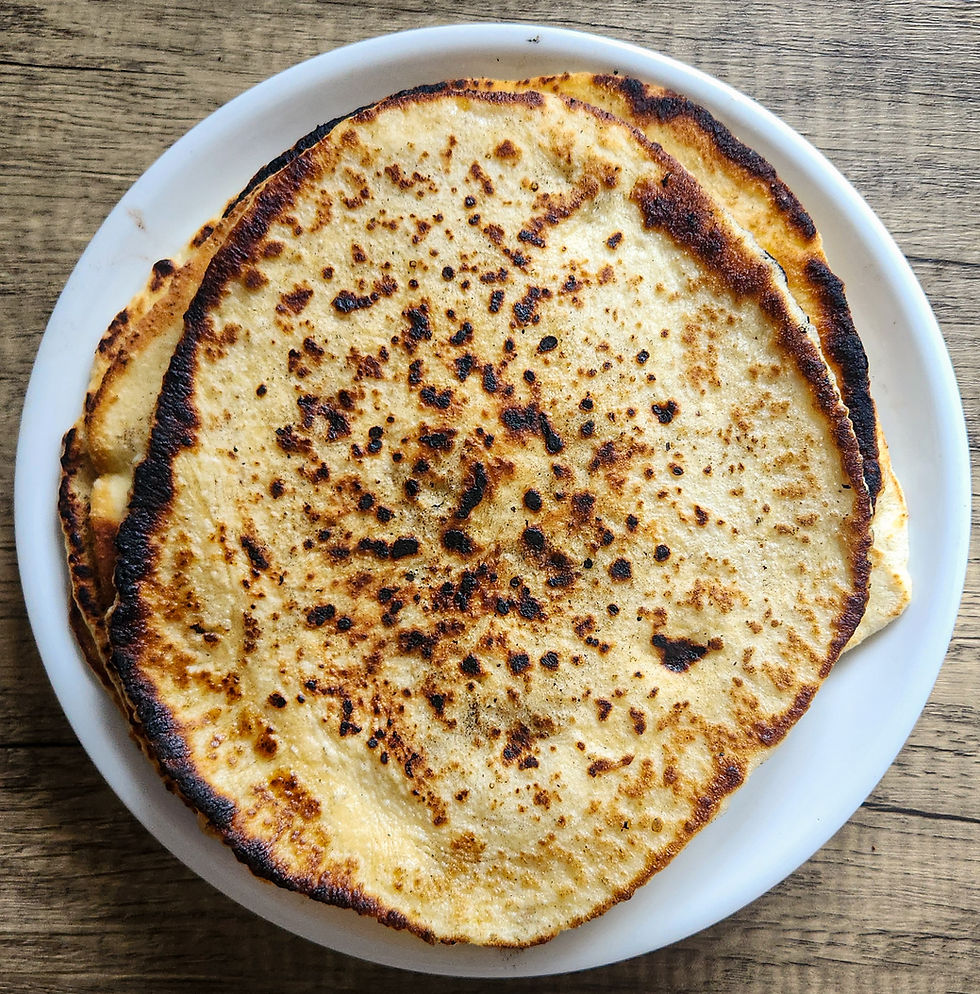Handmade Brioche Bread Recipe
- Daniel

- Aug 26
- 3 min read
Updated: Aug 27
Making brioche by hand is a true labor of love. It’s sticky, messy, and exhausting, but incredibly rewarding.
This version is the Nantaise-style brioche, where the dough is shaped into small balls and packed into a loaf pan. As it bakes, the dough balls rise and merge into one golden, fluffy loaf.

Just outta the oven...
It’s softer and more pillowy than the classic braided brioche, and great for everything from toast and sandwiches to decadent French toast (like that Scrambled French Toast I just made).
Brioche itself dates back to at least the 15th century in France and has long been considered a rich man’s bread due to its generous use of butter and eggs. The Nantaise style is named after Nantes, a city in western France, and is known for this pull-apart loaf shape.

While a stand mixer helps, I wanted to see what would happen if I committed to the full 30-minute hand kneading process, and I’m honestly proud to say it works. The windowpane test passed beautifully.
If you've never made enriched dough by hand, this is a great starting point. It teaches you patience, texture awareness, and how to read the dough.

It's not a "quick bread" by any means, but once you pull it out of the oven—golden, shiny, and buttery, you’ll understand why brioche is such a classic.
And trust me, that first warm slice with a bit of melted butter is unforgettable. Give it a go, even just once. Your hands (and your arms) will remember it.

Ingredients:
(Make 2 loaves)
Whole Milk, 46g
Active Instant Dry Yeast, 6g
Granulated Sugar, 32g
Unbleached Bread Flour, 271g
Sea Salt, 7g
Beaten Eggs, 136g
Unsalted Butter Diced Softened, 122g + More For Greasing
Egg Wash, For Brushing
Equipment:
Oven
Pullman Bread Pan (196 x 106 x 110 mm) X 2
Directions:
Activate the Yeast
Warm the milk just slightly—it should feel lukewarm to the touch.
Stir in the yeast and sugar until dissolved.
Cover and let it sit for 15 minutes or until foamy.
Make the Dough
In a large mixing bowl, combine the flour and salt.
Pour in the yeast mixture and beaten eggs.
Mix with your hands or a sturdy spatula until the dough just comes together.
Begin kneading inside the bowl until all the dry bits are incorporated.
Knead by Hand
Transfer the dough to a floured surface.
Knead for a full 30 minutes—it should become elastic and smooth.
Add the softened butter in small portions, kneading until fully absorbed after each addition.
The dough should pass the windowpane test: stretch a small piece gently—it should not tear and should be almost translucent.
Rest and Chill
Shape the dough into a ball.
Place in a greased bowl, cover, and let rest for 1 hour at room temp.
Stretch and fold the dough for about 5 minutes, reshape, then cover and refrigerate overnight.
Shape and Proof
The next day, divide the dough into 12 equal pieces and roll each into a tight ball.
Place 6 balls in each greased loaf pan.
Brush with egg wash, then cover and let rise for 2.5 to 3 hours, until the dough balls touch and puff up nicely.
Bake
Preheat oven to 180°C (350°F).
Brush again with egg wash before baking.
Bake for 20–25 minutes, or until the tops are deeply golden brown.
Finish
Immediately brush the tops with melted butter once out of the oven.
Carefully remove from the pans and let cool completely before slicing.

Beautiful isn't it?

So good that you can even eat this on its own...




Comments